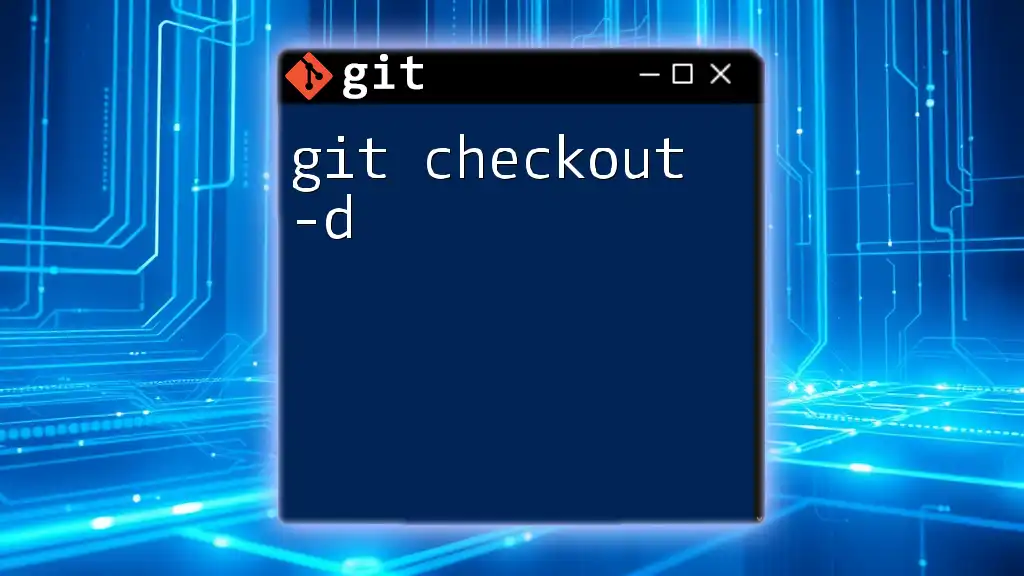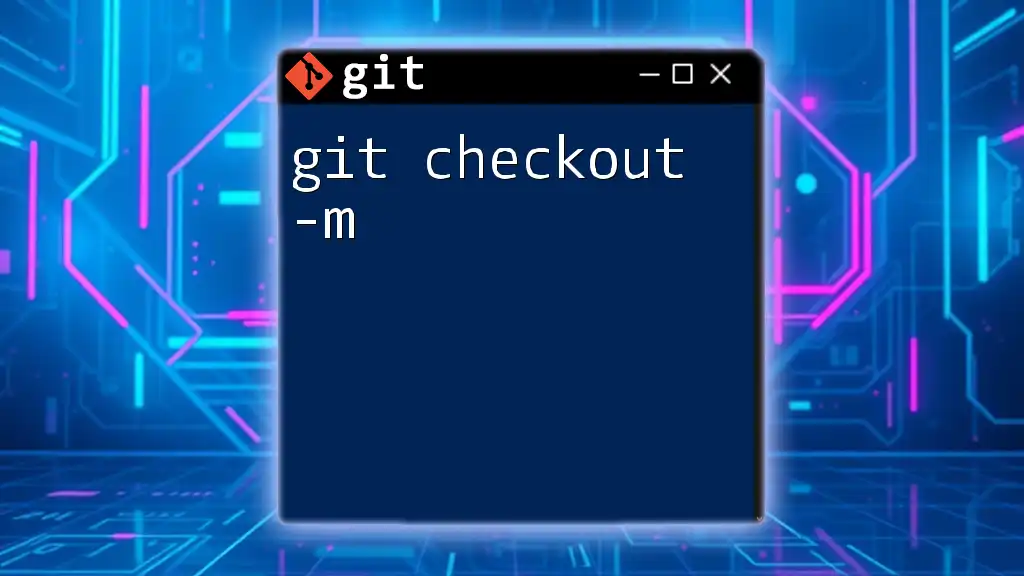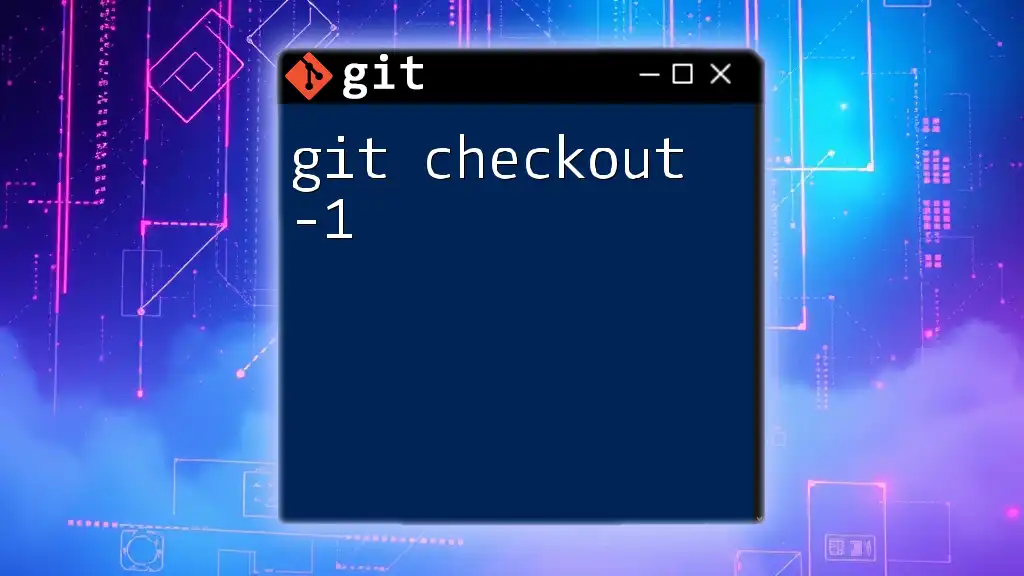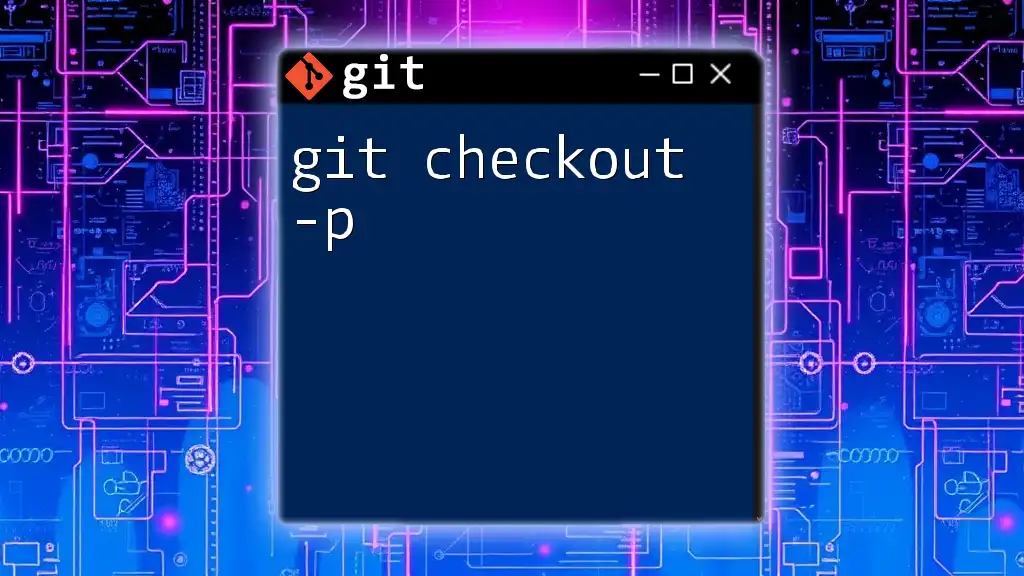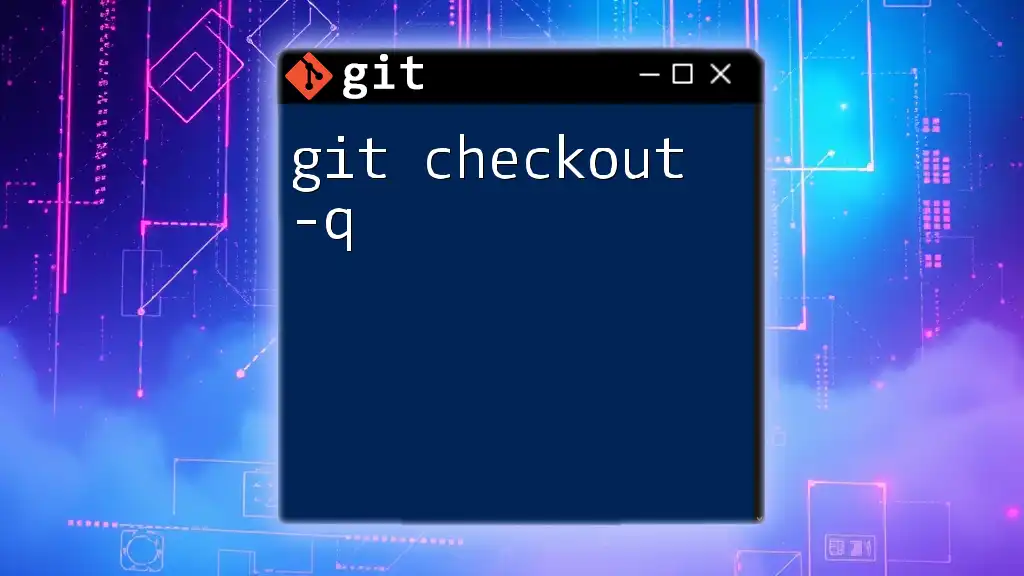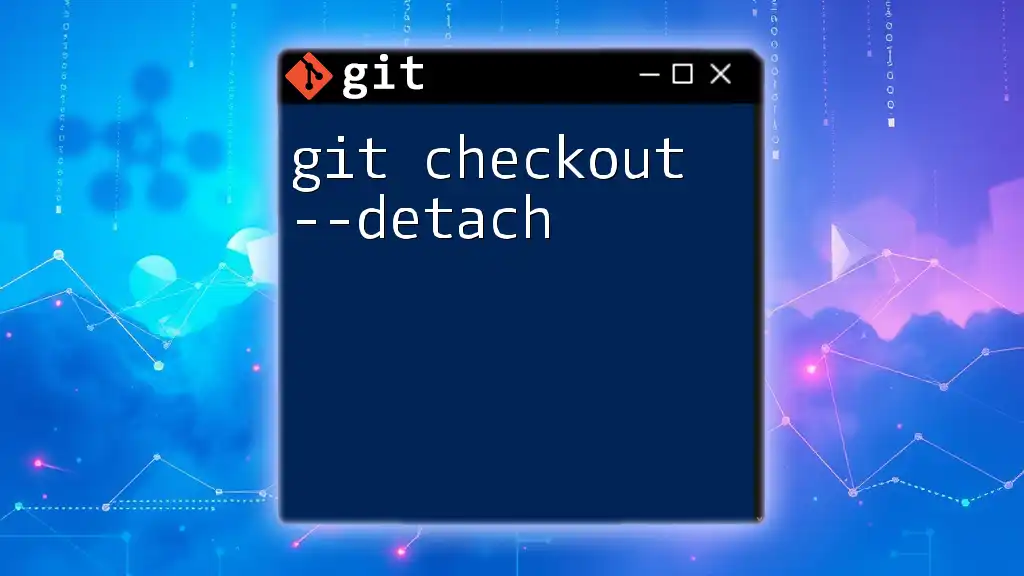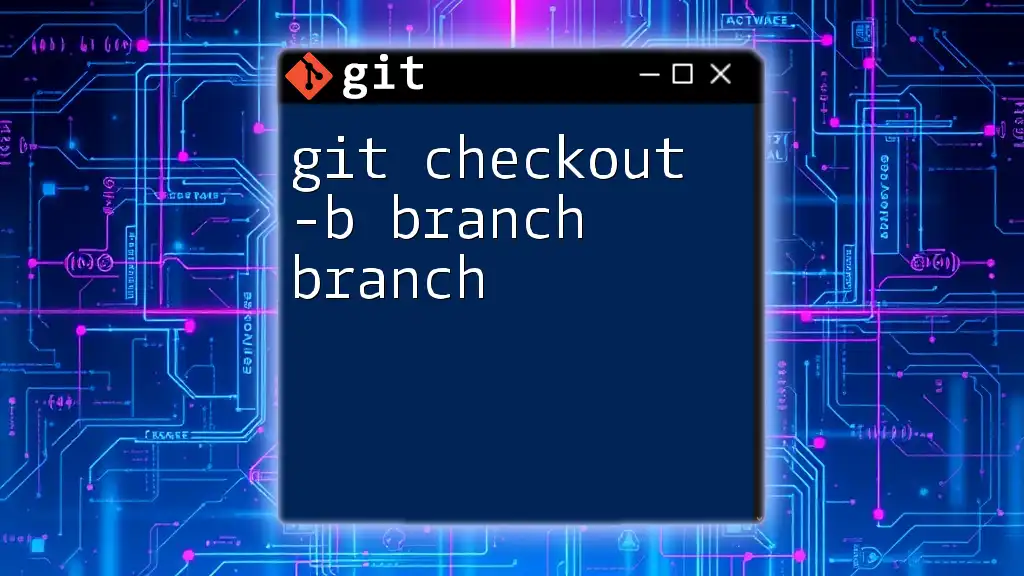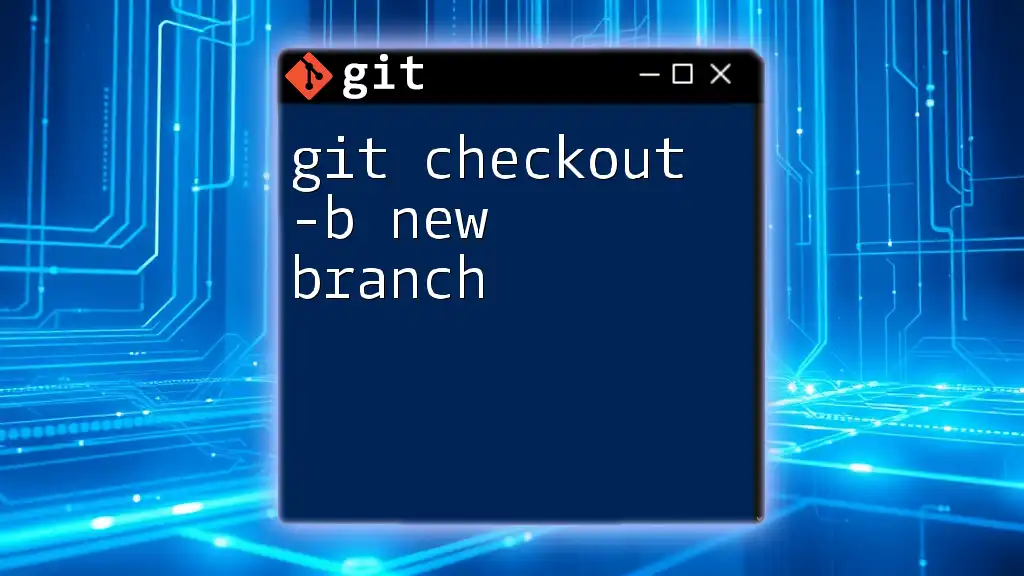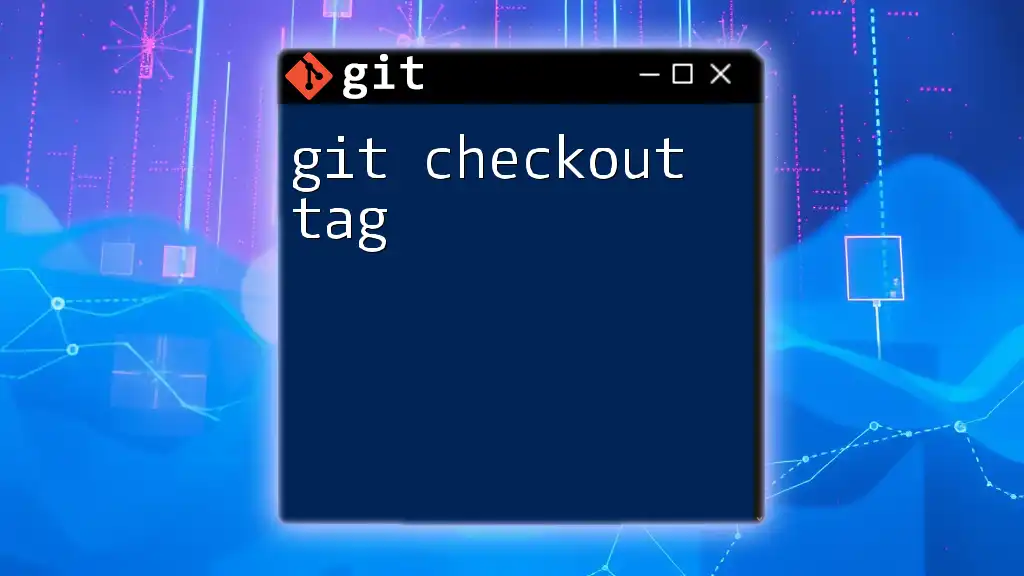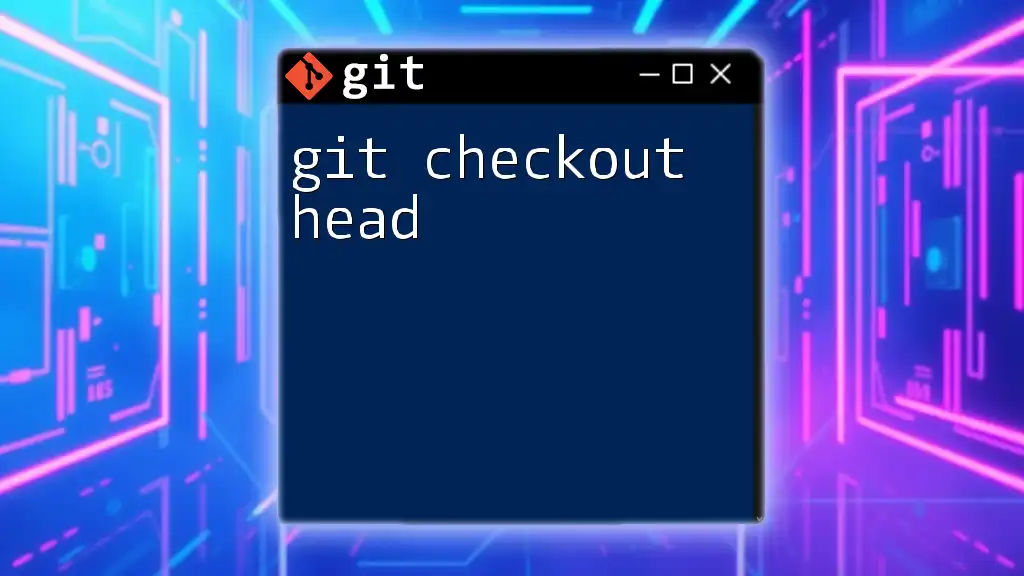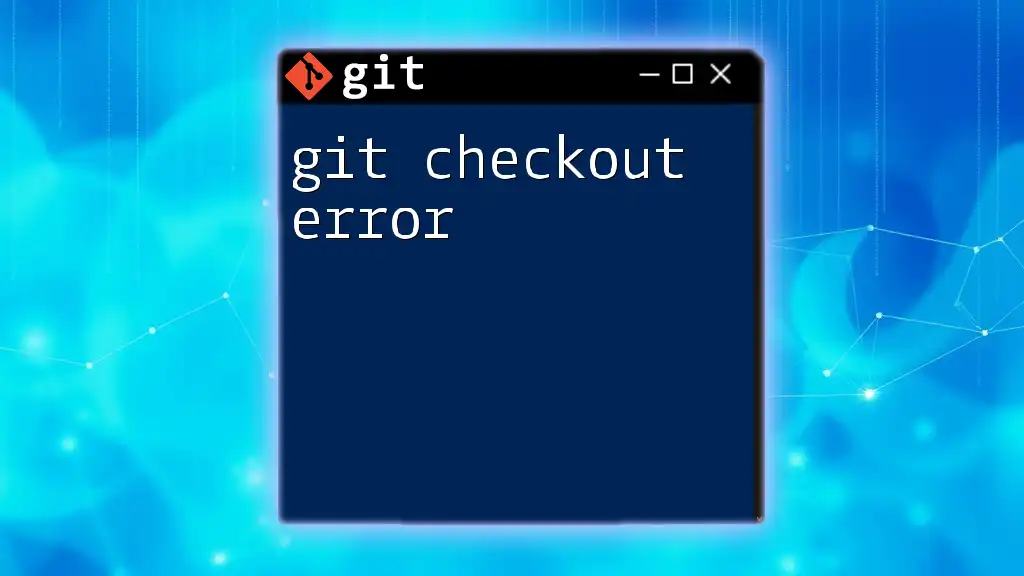The `git checkout -d` command is used to delete a branch in Git if it has already been merged into the current branch, and it can be executed with the following command:
git checkout -d branch-name
Understanding Git Checkout
What is `git checkout`?
The `git checkout` command is a fundamental part of Git, serving multiple purposes in the version control workflow. Primarily, it allows users to switch between different branches or restore files from specific commits. By using this command, developers can manage their project efficiently, ensuring that they can experiment, fix bugs, or develop features using isolated environments.
Common Use Cases for `git checkout`
-
Switching Branches: When working on a project, you may want to switch from one branch (e.g., `main`) to another (e.g., `feature-branch`) to implement new features or fix bugs.
-
Restoring Files: If files have been modified in a branch and you want to revert them back to a previous commit's version, `git checkout` can restore these files seamlessly.
-
Creating New Branches: Although more commonly done using `git checkout -b`, `git checkout` can also be employed to check out a new branch based on the current state of the project.
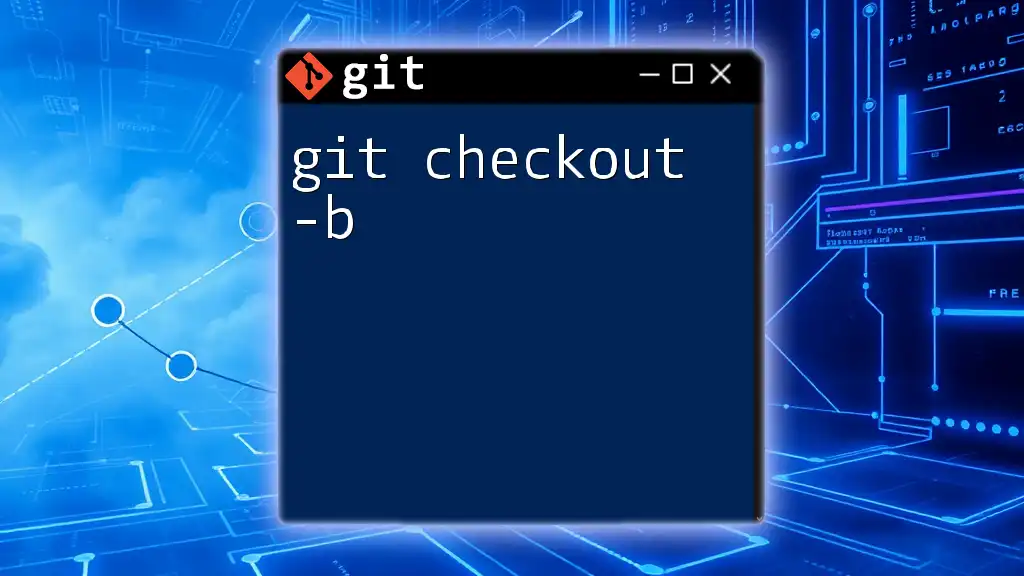
The `-d` Flag in `git checkout`
What Does `-d` Stand For?
The `-d` option in `git checkout` is specifically designed for deleting branches. It is essential for maintaining a clean project, especially when branches become outdated or unnecessary after merging changes back into the primary branch.
When to Use `git checkout -d`
There are scenarios where deleting branches is imperative, such as when:
- A feature has been successfully merged into the main branch, and the corresponding feature branch is no longer needed.
- You want to reduce clutter in the branch list to make navigation easier.
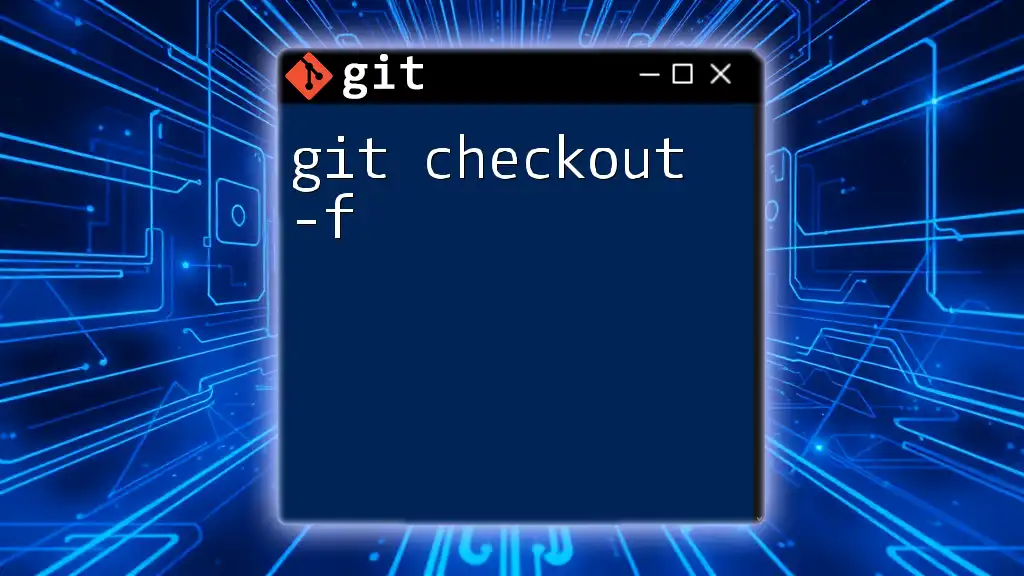
How to Use `git checkout -d`
Basic Syntax of the Command
To use the `git checkout -d` command, the syntax is straightforward:
git checkout -d <branch_name>
Replace `<branch_name>` with the name of the branch you wish to delete.
Examples of Using `git checkout -d`
Example 1: Deleting a Local Branch
Suppose you have merged a branch called `feature-branch` into the main branch, but the `feature-branch` itself is no longer needed. You can delete it using:
git checkout -d feature-branch
This command successfully removes `feature-branch` from the local repository, ensuring your branch list remains clean. It's important to only delete branches that have been merged; otherwise, you risk losing uncommitted changes.
Example 2: Handling Errors When Branch is Unmerged
Sometimes, you may attempt to delete a branch that hasn't been fully merged. In this case, running:
git checkout -d feature-branch
will return an error such as:
error: The branch 'feature-branch' is not fully merged.
To address this, you may choose to forcefully delete the branch with the `-D` flag:
git checkout -D feature-branch
This command bypasses the safeguard against deleting unmerged branches. However, use this option with caution as it will remove any changes made on that branch permanently.
Important Notes on Deleting Branches
Keep in mind that the `-d` flag is intended for local branches only. When needing to delete a remote branch, you should use:
git push origin --delete <branch_name>
Here, `<branch_name>` represents the name of the branch on the remote repository you wish to remove.
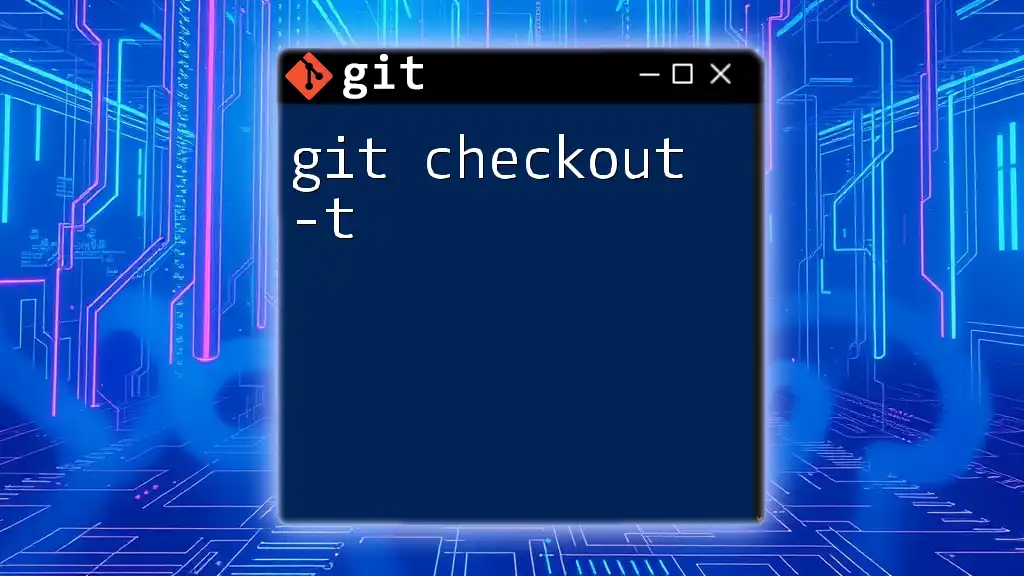
Best Practices When Using `git checkout -d`
Regularly Cleaning Up Merged Branches
It is good practice to regularly clean up merged branches to maintain an efficient workflow. Having a lot of outdated branches can complicate decisions about where to focus your work and clutter your branch list.
Keeping Track of Branches
To effectively manage your branches, use the following command to view all local branches:
git branch
This helps keep track of active branches and assess which ones can be deleted after merges have been completed.
Backup Considerations
Before deleting a branch, ensure that all changes have been either committed or pushed to a remote repository. If you are unsure about whether you'll need the branch later, consider using `git stash` to save your changes temporarily before executing the delete command.
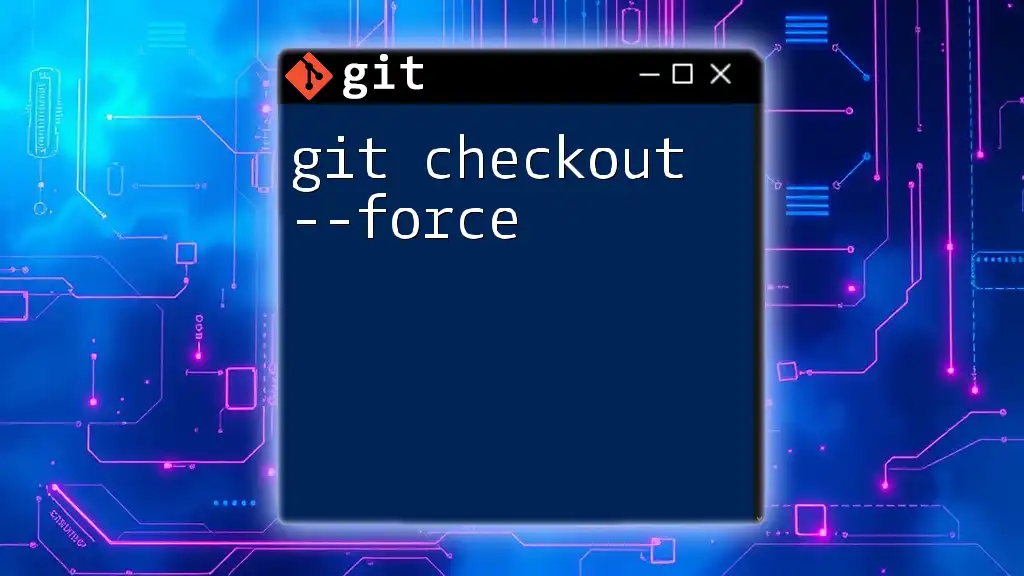
Conclusion
The `git checkout -d` command is an essential part of maintaining a clean and navigable Git repository. Understanding when and how to use this command not only contributes to a more streamlined workflow but also helps prevent any accidental loss of work. Practice with various scenarios to feel confident, and don’t hesitate to explore further into Git through courses and resources available. Embrace best practices for branch management, and elevate your proficiency with Git.

